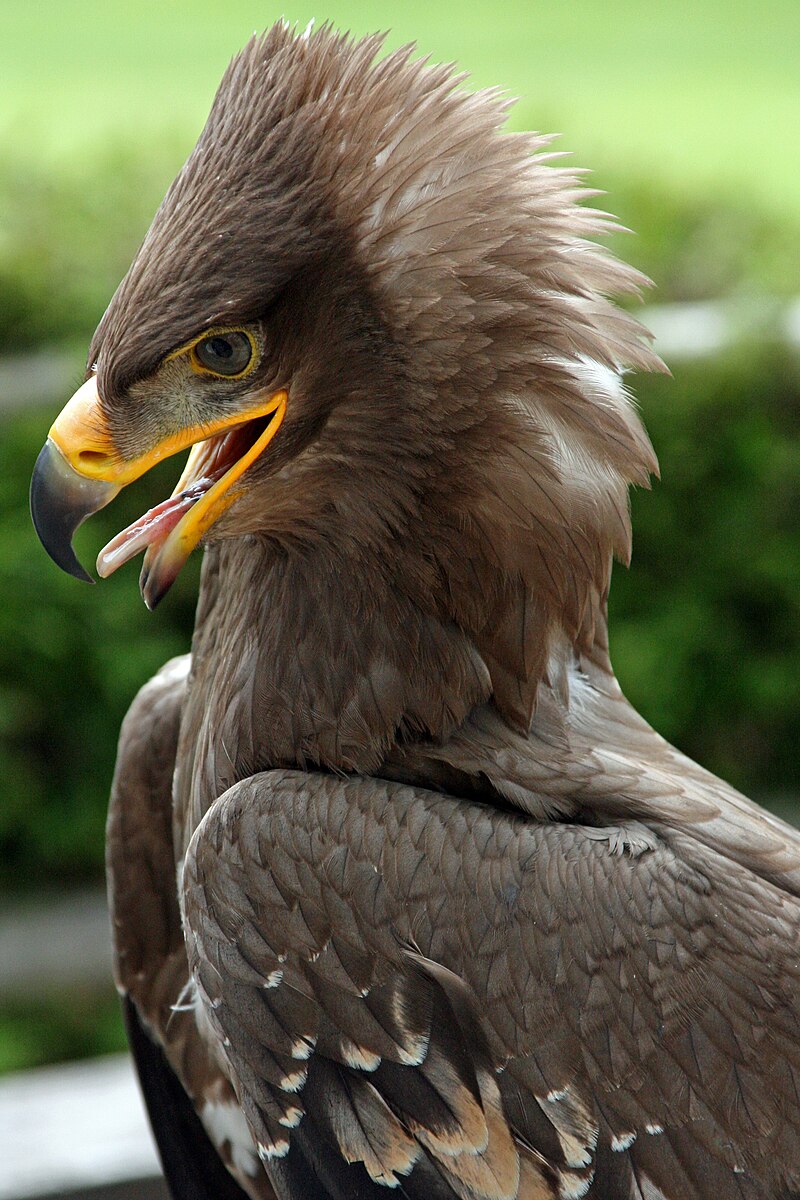The Steppe Eagle (Aquila nipalensis) is a remarkable bird of prey known for its exceptional agility and efficient flight techniques. With a wingspan of up to 190 cm and the ability to reach speeds of up to 300 km/h in a diving flight, this majestic raptor is truly a sight to behold.
The Steppe Eagle’s Impressive Flight Speeds
The Steppe Eagle is capable of impressive flight speeds, both in horizontal and diving flights:
- Horizontal Flight Speed: Up to 60 km/h
- Diving Flight Speed: Up to 300 km/h
These impressive speeds are achieved through the Steppe Eagle’s mastery of soaring and thermal riding. Around 90% of their flight time is spent soaring, which allows them to conserve energy and cover vast distances with minimal effort.
Soaring and Thermal Riding: The Steppe Eagle’s Energy-Efficient Techniques
 Image source: Steppe Eagle by Fimb
Image source: Steppe Eagle by Fimb
The Steppe Eagle’s ability to soar and ride thermals is a key factor in its impressive flight speeds and energy efficiency. By utilizing these techniques, the Steppe Eagle can:
-
Soaring: Steppe Eagles are experts at riding thermals, which are columns of rising warm air. Once they’ve gained altitude, they can then switch to long, straight soaring flights, covering impressive distances with minimal flapping.
-
Thermal Riding: Steppe Eagles are adept at using thermal currents to gain altitude. They can maintain a mean climbing rate of 1.9 m (6.2 ft) per second, allowing them to reach great heights with ease.
These energy-efficient flight techniques enable the Steppe Eagle to conserve energy and maintain high speeds for extended periods, making them formidable hunters and long-distance travelers.
Nesting Behavior: Adapting to the Steppe Environment
In addition to their impressive flight capabilities, Steppe Eagles are also known for their unique nesting behavior. Unlike many other eagle species, Steppe Eagles nest on the ground more frequently, building their nests up to 1 meter in size using sticks and, in some cases, even large mammal bones.
This adaptation to the steppe environment, where trees are scarce, allows the Steppe Eagle to thrive in the open landscapes of its natural habitat.
Conservation Efforts and Threats
The Steppe Eagle is classified as “Vulnerable” on the IUCN Red List, with a declining population trend. Some of the main threats to the Steppe Eagle include:
- Habitat loss and degradation
- Poisoning and persecution
- Electrocution and collisions with power lines
Conservation efforts are underway to protect this remarkable raptor, including habitat preservation, anti-poisoning campaigns, and the installation of bird-safe power lines.
Conclusion
The Steppe Eagle is a truly remarkable bird of prey, known for its exceptional flight speeds, energy-efficient soaring and thermal riding techniques, and unique nesting behavior. As we continue to learn more about this impressive species, it is crucial that we work to protect and conserve the Steppe Eagle for generations to come.

